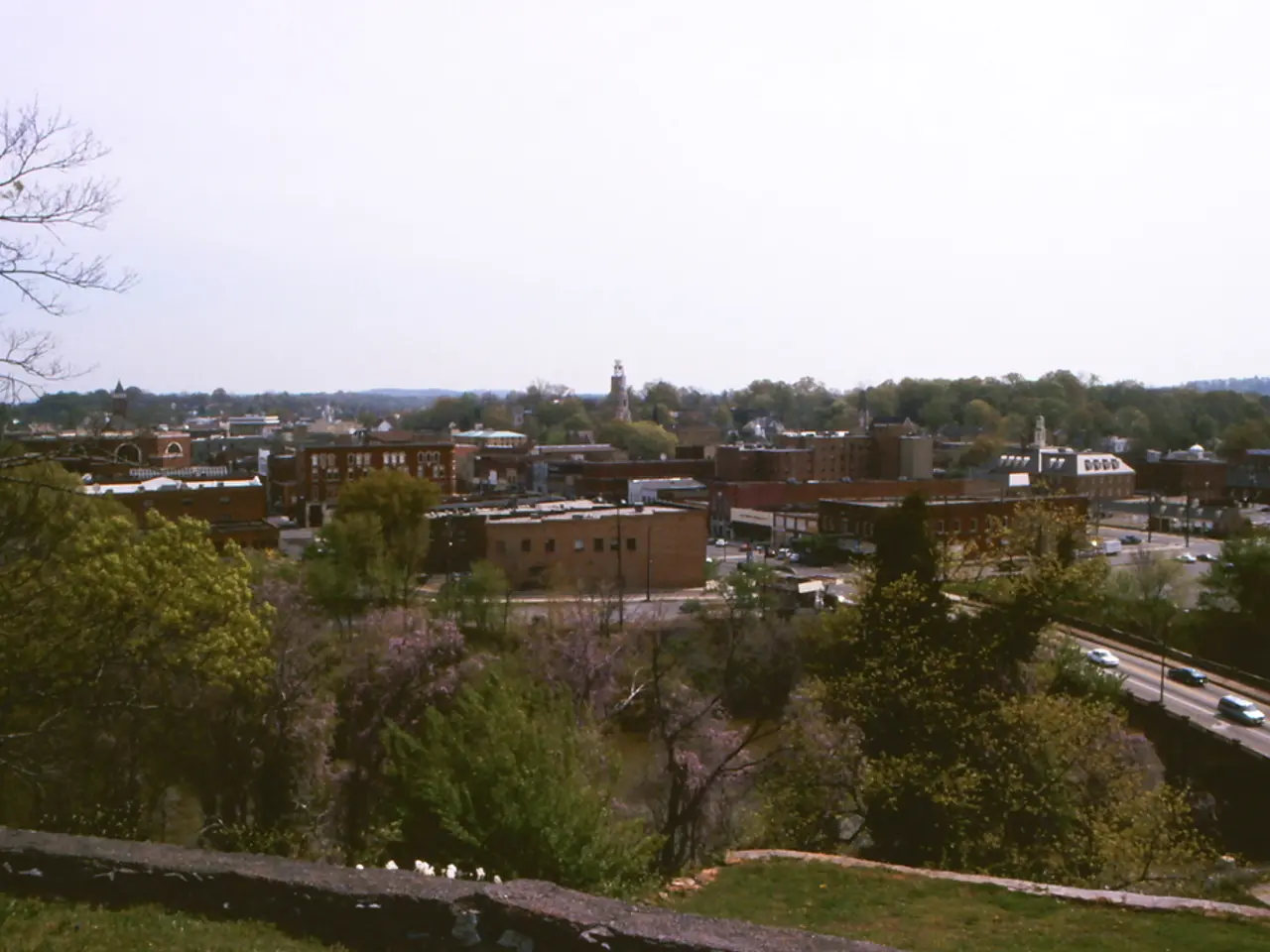Urban Tree Impact: Modifying City Microclimates One Leaf at a Time
Urban Trees: Nature's Air Conditioners and Pollution Fighters
Urban trees play a vital role in creating healthier and more livable cities. These green giants serve as natural air conditioners and pollution fighters, offering numerous benefits to city dwellers.
Each tree absorbs between 10 and 40 kg of CO2 annually, acting as a key player in offsetting urban greenhouse gas emissions[1]. Trees also filter harmful air pollutants such as nitrogen dioxide (NO2), sulphur dioxide (SO2), dust, soot, and particulate matter (PM) by trapping these on leaves, bark, and needles, thereby purifying the air and improving respiratory health[1][4].
Regarding temperature reduction, trees provide shade and cool the air via evapotranspiration, a natural process where water evaporates from leaf surfaces, lowering surrounding air temperatures. This helps counteract the urban heat island effect caused by heat retention in asphalt and concrete[3][4]. Streets lined with trees can be several degrees cooler, contributing to comfort and reducing heat-related health risks, particularly in vulnerable populations[3][4].
Effective benefits of urban trees depend on strategic planting, species selection, and maintenance to ensure canopy longevity and equitable distribution in heat-prone or pollution-heavy neighborhoods[1][3]. A mature tree can absorb dozens of kilograms of CO2 annually, producing enough oxygen for three people every day[5].
The cooling effect of trees can lead to a reduction in energy use for air conditioning by up to 30%. Research shows that tree-lined streets can be up to 10°C cooler than bare ones[2]. Trees near busy roads can significantly reduce the pollution levels inhaled by residents[4].
In summary, urban trees significantly improve air quality, absorb carbon dioxide, and reduce temperature through cooling effects. By reducing the levels of pollutants city residents inhale and mitigating the effects of heat waves, urban trees contribute to a healthier urban environment.
| Impact Area | Urban Tree Effect | Details | |----------------------|-----------------------------------------|----------------------------------------------------------| | Carbon Dioxide Absorption | 10-40 kg CO2 absorbed per tree/year | Key to offsetting urban greenhouse emissions | | Air Quality Improvement | Removal of NO2, SO2, PM, dust, soot | Filters pollutants, improving respiratory health | | Temperature Reduction | Cooling by shade and evapotranspiration | Mitigates urban heat island effect, lowers street temps |
These functions combine to make urban trees vital components of healthier, more livable cities[1][3][4].
[1] "Urban Forestry: A Comprehensive Guide for Tree Stewards" (2015)
[2] "The Effect of Urban Trees on Air Temperature" (2012)
[3] "The Role of Urban Trees in the Urban Heat Island Effect" (2018)
[4] "Urban Trees and Air Quality" (2020)
[5] "How Many Trees Does it Take to Oxygenate a City?" (2019)
- The role of urban trees extends beyond natural air conditioning and pollution fighting, also contributing to environmental science by absorbing carbon dioxide, improving air quality, and reducing temperature.
- By incorporating environmental-science knowledge and implementing strategic planting with proper species selection and maintenance, we can create a positive impact on our lifestyle, fostering a healthier home-and-garden environment, and ultimately, our urban living spaces.




